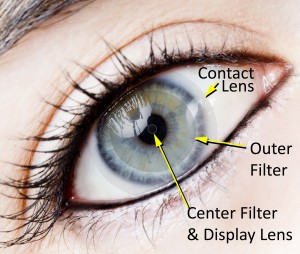Google is rumored to be releasing some Augmented Reality glasses later this year, and while there is no official word on this, they make no secret of the fact that they’re interested in this market and working on concepts. One such concept implementation is shown in the video below, and is a really interesting example not only of AR, but how Google specifically can offer services that enhance your AR experience.
Transcendenz Augmented Reality
I’ve always felt that Augmented Reality (AR) will transform what it’s like to experience the world, but after watching this video about Transcendenz, I find my perspective and vision of AR transformed.
Watching this, I realize that AR has even more potential than I suspected. This technology, if used fully, has the potential to really change what it means to be a person. What does that mean for the future? Will we have ‘haves’ and ‘have nots’? An augmented class of citizen? But more importantly…with some many directions this technology can be used, who will control it? That’s the scary part…
Google AR Glasses
The web is abuzz lately with rumors that Google is not only developing augmented reality glasses, but that they’ll actually be for sale later this year! Features are expected to include a camera and small display (obviously), though also a cellular data connection and multiple sensors (including GPS), for under $1k (closer to $500-600 is more likely). Information will supposedly be displayed in an augmented reality sort of view, overlaid into the wearer’s field of view, rather than be shown on a separate display off to the side. So at this point, it’s all just a bunch of rumors but one things for certain, AR is advanced at a fast pace and once the display technologies have reached a consumer level, expect a flood of apps to surface.
Object Removal in Photographs?
So here’s the problem…you want to take a picture of a person in a public space, but all the strangers walking by keep cluttering up the image! The solution? Use a soon-to-be-released app from Scalado to just ‘exclude’ those random people from the picture. I’m not completely certain how the technology works, but believe it’s essentially taking multiple images of the same picture, so once it identifies an area that has changed (a person walking through the image), it has the data already for what should be behind that person. This video is a nice demonstration of how this technology could be used:
It’s easy to see how this can be useful for taking pictures, but think about taking this one step further. What if this technology were embedded in a realtime AR display? Imagine wearing AR glasses, and having a wearable computer essentially ‘filter out’ all the people from your field of view. Or, once you can do that, replacing them with abstracts. Maybe just floating blue misty shapes like ghosts, so you know there are people there but aren’t distracted by the details? At that point, the possibilities are endless and really just a matter of creative software implementation. Awesome.
AR Contact Lenses
 Scientists have already managed to create contact lenses that contain a single LED, so it’s no surprise they’re working on increasing that resolution to a more usable level. Due to the obvious tactical advantage in a combat situation, it’s no surprised that DARPA is an active participant in such research, working with Washington-based iOptiks on just such a solution. Eventually, you can expect this to trickle down to the consumer level, which would allow for virtually seamless augmented reality integration into our lives. Until then, expect the AR experience to be first tackled through use of eye glasses such as these. The next decade is going to be exciting for AR, I can’t wait to see how this develops! Read more here.
Scientists have already managed to create contact lenses that contain a single LED, so it’s no surprise they’re working on increasing that resolution to a more usable level. Due to the obvious tactical advantage in a combat situation, it’s no surprised that DARPA is an active participant in such research, working with Washington-based iOptiks on just such a solution. Eventually, you can expect this to trickle down to the consumer level, which would allow for virtually seamless augmented reality integration into our lives. Until then, expect the AR experience to be first tackled through use of eye glasses such as these. The next decade is going to be exciting for AR, I can’t wait to see how this develops! Read more here.
(via Slashdot)
